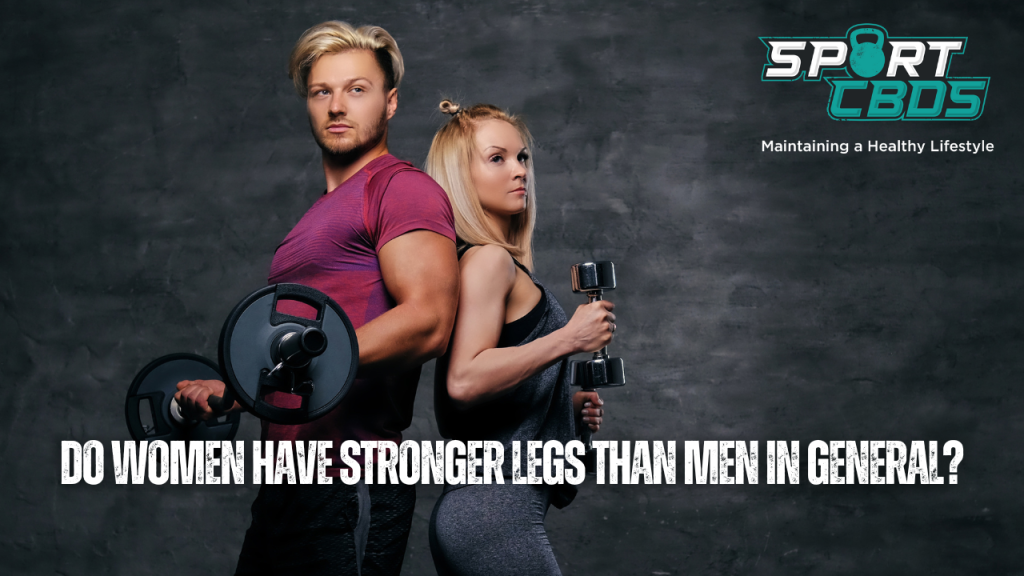
The Strength Showdown: Do Women Have Stronger Legs Than Men in General?
The question of whether women have stronger legs than men in general is one that has sparked considerable debate in the fields of fitness, sports, and health.
This topic is not just a matter of curiosity, but it also holds significant implications for training regimens, athletic performance, and understanding of our bodies.
The importance of understanding muscle strength differences between men and women extends beyond the gym or the sports field.
It can influence medical and physiotherapy practices, inform gender-specific training programs, and even challenge societal perceptions about gender and strength.
Do Women Have Stronger Legs Than Men in General?
The question of whether women have stronger legs than men in general is multifaceted and depends on how we define “strength”. While men typically have greater absolute muscle strength due to larger muscle mass and higher testosterone levels, the strength differences between men and women are not as large as often perceived, especially when adjusted for muscle size and body composition. Women tend to have a higher proportion of their muscle mass in the lower body, but this doesn’t necessarily translate into greater strength. Furthermore, for a given amount of muscle, men and women are roughly equally strong. Therefore, while it’s a common perception that women might have stronger legs than men, scientific evidence suggests that men generally have greater absolute strength, both in the upper and lower body. However, individual variation can be considerable, influenced by factors such as genetics, diet, lifestyle, and training.
Physiological Differences Between Men and Women
When we delve into the physiological differences between men and women, we find that these differences are not just skin deep. They extend to our muscles and how they develop.
Men and women have different muscle compositions. Men typically have a higher percentage of type II muscle fibers, which are larger and more powerful but fatigue more quickly. Women, on the other hand, have a higher percentage of type I muscle fibers, which are smaller, less powerful, but more resistant to fatigue. This difference in muscle fiber types contributes to the overall muscle strength differences between the sexes.
Hormones also play a crucial role in muscle development. Testosterone, a hormone that is more prevalent in men, is particularly important for muscle growth. It promotes the increase in muscle size and strength. Women, while they do produce testosterone, do so at lower levels than men. Instead, estrogen, the primary female sex hormone, plays a significant role in women’s bodies. While estrogen doesn’t directly increase muscle strength, it has a protective effect on muscles and can influence muscle recovery and repair.
However, it’s important to note that muscle composition and hormones are just part of the picture. Other factors such as body size, bone density, and even the distribution of fat and muscle can influence muscle strength.
In the next sections, we will delve deeper into the general muscle strength of men and women, take a closer look at lower body strength, and debunk some common misconceptions about women’s leg strength.
General Muscle Strength: Men vs. Women
When it comes to general muscle strength, men typically have an advantage. This is largely due to their larger muscle mass and higher levels of testosterone, which promotes muscle growth. On average, men are 30-40% stronger than women in terms of absolute strength, particularly in the upper body.
However, when we adjust for factors such as body size and muscle mass, the strength gap between men and women narrows significantly. In fact, when strength is expressed relative to muscle cross-sectional area, the differences in strength between men and women are almost negligible. This means that for a given amount of muscle, men and women are roughly equally strong.
Several factors influence muscle strength, including:
- Muscle mass: Larger muscles can generate more force, leading to greater strength.
- Neural factors: The nervous system’s ability to activate muscle fibers can influence strength.
- Hormonal factors: Hormones such as testosterone and growth hormone contribute to muscle growth and strength.
- Training and physical activity: Regular strength training can increase muscle strength, regardless of gender.
Related: The Ultimate Guide: How Often Should You Max Out Lifting Weights?
Lower Body Strength: A Closer Look
When it comes to lower body strength, the differences between men and women are less pronounced than for upper body strength. While men still tend to have greater absolute lower body strength, the gap is narrower. This is because women tend to carry more of their muscle mass in the lower body.
Several factors contribute to lower body strength, including:
- Muscle mass and distribution: Women tend to have a higher proportion of their muscle mass in the lower body, which can contribute to strength in the legs.
- Hormonal factors: Hormones such as estrogen can influence muscle recovery and repair, which can impact strength.
- Physical activity and training: Regular lower body strength training can increase muscle strength in the legs.
It’s important to note that while there are general trends in muscle strength between men and women, there is considerable individual variation. Factors such as genetics, diet, lifestyle, and training can all influence muscle strength.
Misconceptions About Women’s Leg Strength
There are several myths and misconceptions about women’s leg strength. One common myth is that women have stronger legs than men. While it’s true that women tend to have a higher proportion of their muscle mass in the lower body, this doesn’t necessarily translate into greater strength.
Another misconception is that women’s legs are stronger because they exercise them more. While regular exercise can certainly increase muscle strength, it doesn’t change the fundamental physiological differences between men and women.
Scientific evidence consistently shows that men have greater absolute muscle strength, both in the upper and lower body. However, when strength is adjusted for muscle size, the differences between men and women are much smaller.
Case Studies and Research
Several key studies have explored the topic of muscle strength differences between men and women.
For example, a Comparative Study on Strength found that men have greater absolute strength, but the differences are smaller when adjusted for muscle size.
Another study published in the Acta Physiologica found interesting results. It suggests that women might be less fatigable than men due to the differences in muscle fiber type and size, metabolism, and hormone levels.
These studies and others like them have important implications. They challenge common misconceptions about gender and strength, and they highlight the importance of considering factors like muscle size and body composition when comparing strength between individuals.
Related: Tackling Workout Fatigue: Why Am I Too Tired to Finish My Workout?
Is Recovery a Factor?
While the question “Do women have stronger legs than men in general?” is primarily answered through physiological and biological factors, the use of CBD may play a role in muscle recovery and strength enhancement for both genders. CBD, or cannabidiol, is known for its anti-inflammatory properties and its ability to aid in muscle recovery.
This can potentially help both men and women improve their leg strength by reducing inflammation, easing pain, and promoting faster recovery after workouts.
A study published in the Journal of Experimental Medicine supports these findings, suggesting that CBD can significantly suppress chronic inflammatory and neuropathic pain. For a more comprehensive understanding of CBD and its potential benefits, you can refer to this guide.
FAQs
Are women’s legs stronger than men’s?
While women tend to have a higher proportion of their muscle mass in the lower body, this doesn’t necessarily translate into greater strength. Men generally have greater absolute muscle strength, both in the upper and lower body.
Which gender has more physical strength?
In terms of absolute strength, men typically have more physical strength due to larger muscle mass and higher levels of testosterone. However, when strength is adjusted for muscle size, the differences between men and women are much smaller.
Is female muscle stronger than male muscle?
For a given amount of muscle, men and women are roughly equally strong. This means that female muscle is not inherently weaker or stronger than male muscle.
Do women have more strength than men?
In terms of absolute strength, men generally have more strength than women. However, when adjusted for factors such as body size and muscle mass, the strength gap between men and women narrows significantly.
Final Thoughts…
While there are differences in muscle strength between men and women, these differences are not as large as often perceived. Men typically have greater absolute strength due to larger muscle mass and higher testosterone levels. However, when strength is adjusted for muscle size and body composition, the differences between men and women are much smaller.
These findings have important implications for fitness, sports, and general health. They challenge common misconceptions about gender and strength, and they highlight the importance of considering factors like muscle size and body composition when comparing strength between individuals.
Do you think women are generally have stronger legs than men? Have our tips been beneficial to you? We’d love to hear your feedback, so please share your thoughts in the comments section below.
If you’re a sports enthusiast who utilizes CBD for optimal recovery after intense workouts, then you’ve found your tribe. Welcome to Sport CBDs, where we push our limits in training and prioritize recovery in the most effective way possible.
We regularly share workout routines on our YouTube channel and offer a range of health and fitness products designed to give you that competitive edge.
Why not explore the high-quality CBD products we proudly feature on our site? Visit the Sport CBDs Store by clicking here. In addition to CBD, we also offer an array of fitness clothing and yoga accessories to complement your active lifestyle.
Until next time, we wish you the best in your fitness journey. Remember, your progress is our passion. Stay strong and keep pushing!

Lee
Founder – Sport CBDs
Featured Image Attribution – Image by fxquadro on Freepik

